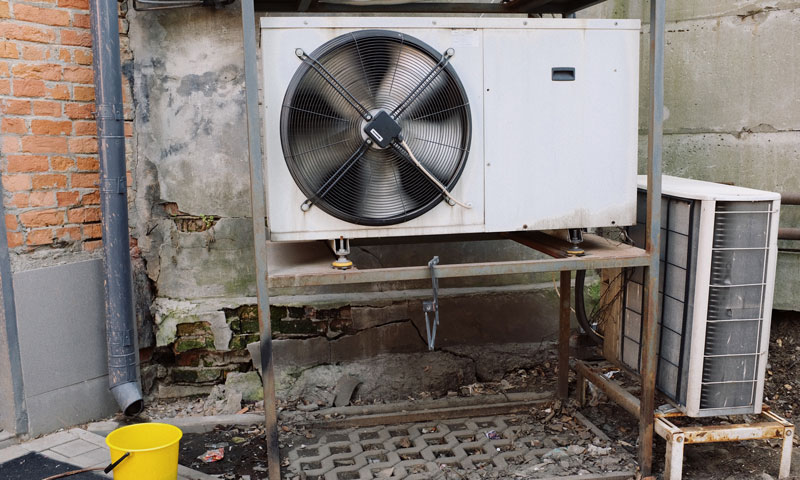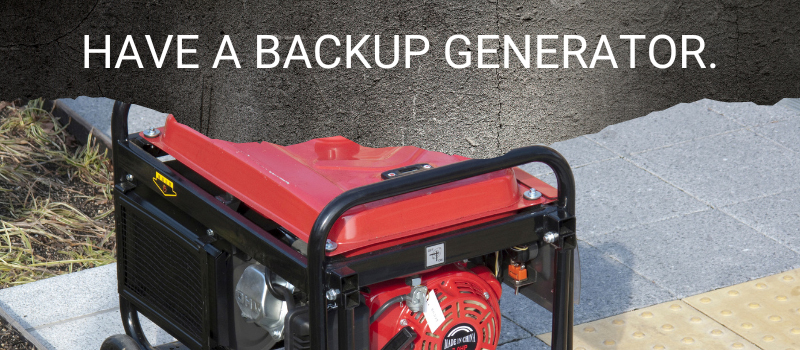
Severe storms like blizzards and hurricanes come with many “surprises” that can cause serious havoc if homeowners aren’t well prepared for them.
During this time, having emergency power sources like flashlights (with extra batteries) will come in handy in case the storm damages a power line.
But it’s also crucial to prepare your HVAC unit for such weather.
While modern HVAC units can withstand harsh weather conditions, they aren’t fully immune to damage caused by storms, which occur in various ways as shown below:
Industrial Stores understands that your HVAC unit is a huge investment worth protecting.
Getting it storm-ready will not only keep your loved ones safe and cozy, but it will also lower heating and cooling costs and extend your HVAC’s life, plus reduce the need for repairs.
Luckily, there are four steps you can take to safeguard your HVAC system before a severe storm hits.
(Note: These precautions will differ depending on the type and severity of the storm. Tropical storms such as hurricanes and typhoons, for instance, are more severe and will need you to shut down your AC unit, while wind storms may only require you to clear debris around the unit to avoid damage from falling objects.)
One of the easiest and most effective ways to prepare your HVAC unit for oncoming winter storms is through the preventive maintenance of your heat pump, furnace, boiler, and air conditioner.
Maintaining your unit will help cut down on costs by catching minor repair issues before they escalate, while regular cleaning ensures smooth operation and efficiency.
However, your furnace and other heating appliances should only be serviced by a licensed technician who can identify and fix potential problems early. Doing so will eliminate safety threats such as carbon monoxide poisoning and electric shocks.
A licensed technician is trained to inspect everything, from thermostats to blower motors and gas pressure, and ensure your HVAC unit is clean and in perfect operating condition.

Securing your HVAC unit before a snowstorm or ice storm is an excellent way of extending its life and preventing costly repairs.
An HVAC unit can withstand rain but not flooded stagnant water. When immersed in a pool of stagnant water, the unit can catch fire, breed infectious bacteria, or cause electric shock.
Fortunately, there are many ways to keep your outdoor HVAC unit safe from storm destruction, including:
Always shut down your HVAC unit during tropical storms, no matter how minor the storm may be.
Cutting off your HVAC unit’s power will prevent burning its motor or any potential harm caused by lightning strikes.
It will also help you save extra money you would have used for repairs and replacements, particularly if you live in a flood zone or a coastal area.
But even with a well-functioning HVAC unit, your power supply could break down during a hurricane, and sometimes go up to weeks before repair.
Having a backup generator is an excellent way to combat a short or long-term power outage. It will provide your HVAC unit with power to keep it running after the storms until your main supply is restored.
Whole-house (or permanent) generators can last between 1,500 and 3,000 hours, which is enough backup power for an entire house. They’re a perfect choice if your area is prone to frequent power outages.
Portable generators, on the other hand, provide sufficient power for crucial electricals only, like your HVAC system, computers, and televisions. They’re ideal for short-term use, but they shouldn’t run continuously for more than 500 hours.
Whichever generator you choose, it’s essential to keep it away from closed spaces, including the garage. Generators release carbon monoxide, a colorless and odorless gas that can be deadly when inhaled.
Instead, run your generator outdoors far from your home’s doors and windows, with its exhaust engine facing away from the door.
And remember to always use your generator under a plastic shed, pop-up canopy, or steel enclosure during thunderstorms, hurricanes, blizzards, and other severe storms to protect it from moisture damage.
Expert Tip: Troubleshoot your generator’s problems when the weather is clear to ensure you have a reliable generator when your power goes out. Industrial Stores offer multiple generator parts and accessories to keep your machine in perfect condition before the stormy season kicks in.

The high winds brought about by severe thunderstorms or hurricanes can cause tree limbs and branches from nearby vegetation to break away and get thrown around.
If the flying debris hits your AC unit, they can severely damage it. That’s why it’s crucial to cut back any tree limbs or branches close to your AC unit and those that overhang your outdoor unit.
Trimming the nearby trees and branches help to protect your AC unit in two major ways:
When trimming tree branches and bushes, ensure you follow the right safety guidelines and use the appropriate tools so don’t incur injuries in the process.
In a nutshell, below is a summary of the key steps to take to prepare your HVAC unit for storms with their brief explanations.
Once the winter or tropical storm has passed, follow these tips to ensure your HVAC unit is functioning effectively:
Most HVAC units today can handle severe weather conditions, but they’re not immune to damage. Look for the following signs if you suspect that your unit was damaged in a severe storm:
If you notice any damage or are unsure of your unit’s condition, contact a licensed technician for a professional inspection. Flooding or debris may have caused damage, and turning it on without inspection could worsen the situation.
Preparing your HVAC unit for winter and tropical storms will significantly save you money on damage costs and make the whole experience more manageable.
Turn to Industrial Stores for your HVAC system parts and accessories. We’ve got thousands of competitively priced products from leading manufacturers in the HVAC field.
We also offer personalized customer care for all your HVAC needs. This means that you don’t have to go from shop to shop, which will also save you time and money.
" ... thank you for your extremely quick shipping … I will be a customer from now on!"
— Janet Wartschow
Visit our product catalog to place an order. For further inquiries, don’t hesitate to contact us. One of our experts will be happy to speak with you.
Share on Facebook: